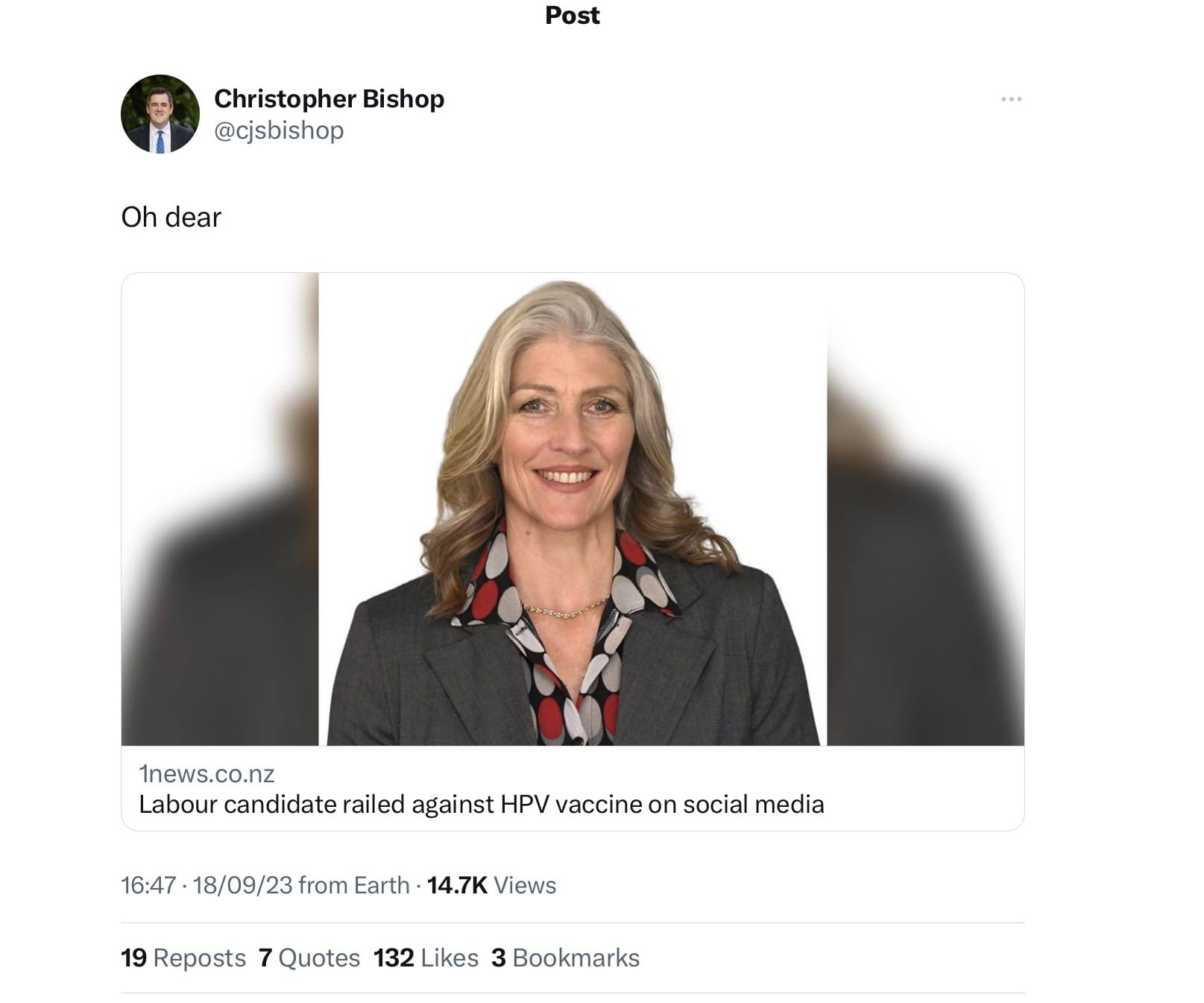What is the difference between a conspiracy theory and an actual conspiracy? Covid supplied the answer, which is time: the time taken for facts to become public knowledge.
They told us Covid would kill 80,000 New Zealanders. Social distancing and masks stop the spread. Stay home and save lives. Don’t speak to your neighbour. Get vaccinated and boosted – it’s your moral duty. We didn’t question government edicts as propaganda or conspiracy theories but the passage of time shows they were just theories, the science wasn’t available, and they were actually government edicts based on fear and ‘hopium’.
Covid heightened our perception and terrified us into standing to attention at 1 pm every day for the most important news of the day. Politicians and very important people bathed in the spotlight and the media wet themselves with excitement over their role in delivering what can now best be called propaganda and misinformation.
Those days are over.
Politicians, important people and the media have moved on, without regret, excuse or apology, leaving us to claw our way through the rubble of once good and productive lives. We are left looking for explanations for dividing the nation, severing close relationships, losing trust in government authorities, facing ongoing health problems and pondering on the reason for the excess deaths plaguing the Western world: legacies of the Covid pandemic that wasn’t.
Proponents of the Covid fear-mongering have not publicly revisited their part in extreme anti-social, unnecessary diktats and the public is only too happy to let them off the hook by parroting media excuses such as “we avoided Covid deaths” or “we had to do something, we couldn’t stand by and do nothing”.
A conspiracy by its very nature is hidden from plain sight and it is beneficial to those who receive the benefits to keep facts hidden.
A conspiracy revealed is no longer a conspiracy theory to be scorned and mocked along with its tinfoil hat-wearing proponents; a conspiracy theory transitions into fact with the application of scientific study and fact made public.
Conspiracy theories that become fact carry the possibility, although not the certainty, of conspirators driving them.
Some conspiracy theories will never become fact: the flat earth society will always be a conspiracy theory, but other conspiracy theories such as punishing witchcraft, which was prevalent between the 15th and 18th centuries and saw some 50,000 people executed as witches in Europe, have disappeared into the annals of history.
Election year brought with it the opportunity for politicians and media to come clean over their part in Covid cover-ups, but they didn’t do it. Instead, some choose to wield the blunt instrument and label their political opponent a conspiracy theorist.
Party affiliation is irrelevant; the opportunity for a cheap and unnecessary shot is irresistible to an unscrupulous two-legged political tool.

Labour leader Chris Hipkins used a campaign trail visit to Tauranga and Papamoa to take swipes at both the potential National and Act ‘coalition of chaos’ and Destiny Church – who he said were largely behind some of the disruption seen in the run-up to the election.
He also took aim at National Hamilton East candidate Ryan Hamilton over his reported former views on fluoridation of water.
“I haven’t found conspiracy theorists change their views,” Hipkins said.
He also said such comments acted as an “alarm bell for New Zealand … the people they [National] could be bringing into Government”.
Stuff
When someone accuses you of wearing a tinfoil hat, remind them it’s better than being accused of wearing a blindfold.









